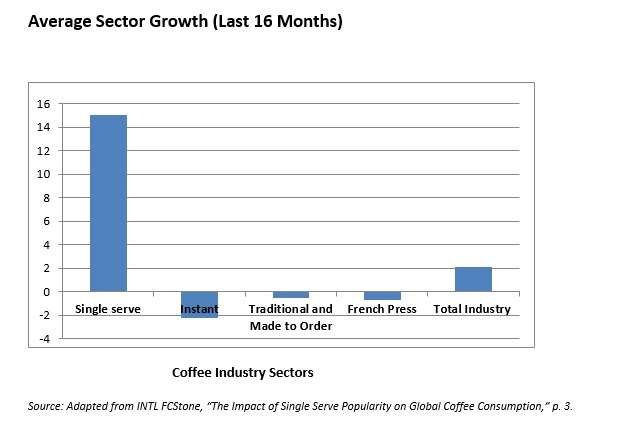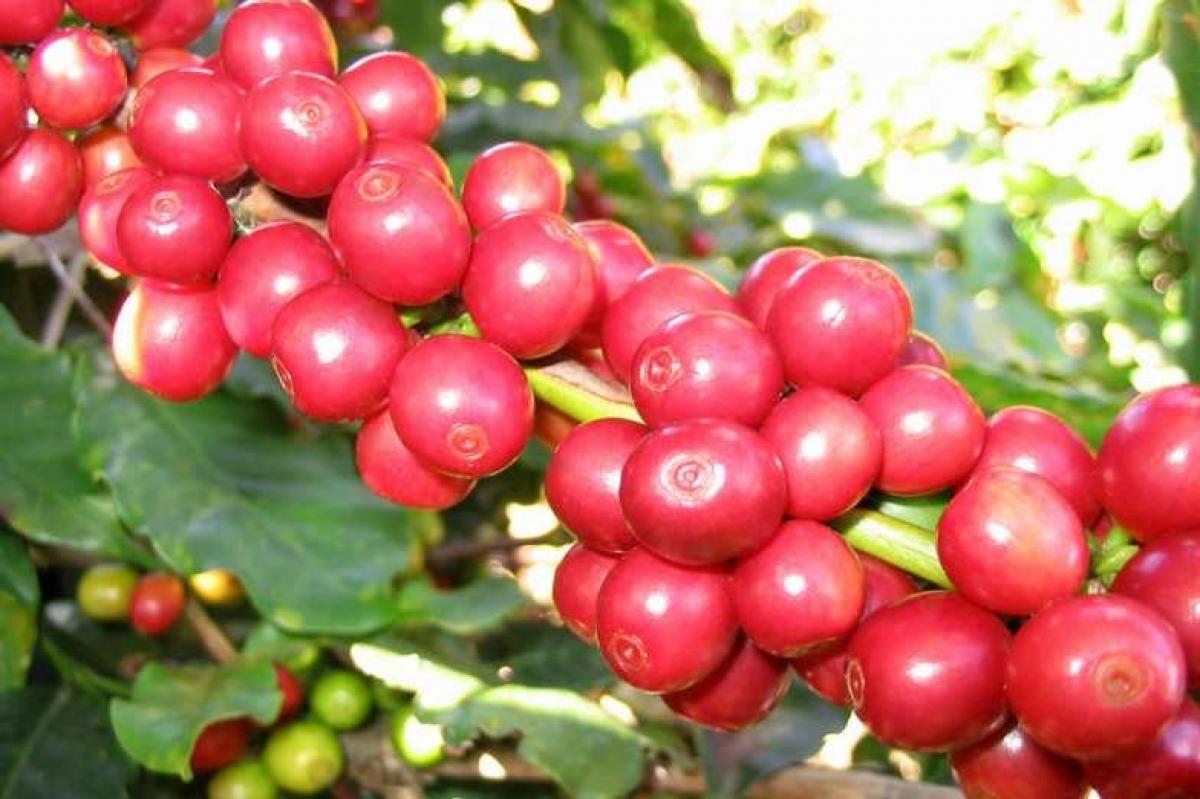The popularity of the drip coffee maker is in decline, or at least it has passed its peak. In 2013. 58% of coffee drinkers had used such a coffee maker on the day before the day they were asked, that is, “yesterday.” That number was down to 54% in 2014, and stayed at 54% in 2015.
The coming thing in this area? The single-serve preparation: twenty-five percent reported use of a single-serve machine the day before. Furthermore, the prevalence of single-serve machines makes coffee consumption more constant. According to a report from the National Coffee Association, “single-cup brewer owners were more likely than non-owners to have drunk coffee yesterday.”
INTL FCStone Financial Inc. has recently published a white paper on the impact of the growth of single serve brewers on the global coffee market. It includes the numbers on coffee sector growth, numbers that make clear in graphic form that the growth in the total industry over the last 18 months has been fueled by the growth in single serve consumption: and has occurred despite shrinkage in other sorts of consumption.
On the one hand, as noted, consumers with such machines are more regular users than they might otherwise be. If all other things were equal, that would be good for global consumption. But they aren’t equal. Single use machines are more efficient, which may mean a reduction in use overall. Consider the full carafe of coffee that results from the efforts of an old style drip coffee maker: the odds are good that much of that carafe’s worth will eventually go down a kitchen sink.
From the point of view of global demand figures, the sink’s consumption matters as much as does a human being’s consumption. Indeed, the FCStone report suggests that the sink’s consumption remains a significant part of the whole. It quotes one expert who says, “Consumers would historically brew a pot of coffee and consume 1-2 and throw out the remainder. Single-Serve has essentially eliminated significant waste.”
That said: do k-cups and their cousins’ efforts increase or decrease overall consumer demand for coffee?

As to total demand: It is a fact that coffee consumption has stagnated globally, although the market is sufficiently complicated that it would be foolhardy to assign a single simple cause to that stagnation. The number, though, is 24 million. That is the total number of bags of coffee expected to be consumed from the 2015/16 season, and that will constitute only a “minimal increase,” the white paper says, since the 2011/12 season.
The white paper’s author, Alexis Rubinstein, quotes in this connection the thoughts of Jonathan White, the executive vice president of White Coffee Corp., who says that he does not think global consumption will decline in the long run “even if there is an initial decline” due to the lowered consumption by kitchen sinks. One of the counter-acting facts is that the single serve system will encourage people to experiment with different a range of types of coffee.
Confirming evidence of that encouragement? The owners of single server brewers are somewhat more likely than non-owners to have consumed gourmet coffee beverages “yesterday.”
One key point in this connection: the technology is improving in its ability to deliver the gourmet-ness of gourmet coffee. Samuel Nahmias, the president and chief operating officer of a global market research firm, StudyLogic, says that the quality of single-serve coffee was not initially hit-and-miss. “The coffee would go stale and the systems/machines would not measure adequate water levels for each cup.” As the machines get better, their function as gateways to gourmet tastes in coffee becomes more important.
Backing up and looking at the Big Picture, one can ask whether an industry, any industry, can long sustain a business model that depended on continuing consumption by “the sink.” Climate is changing, populations are increasing, and emerging nations are industrializing: there will over time be less land available for coffee cultivation. The single cup and its greater efficiency may in due course be seen as having rescued the industry through an instance of what Joseph Schumpeter, echoed here, used to call the “perennial gale of creative destruction.”




